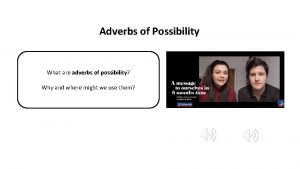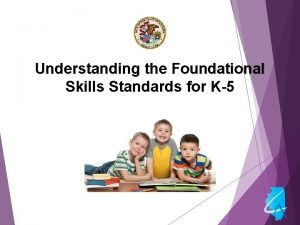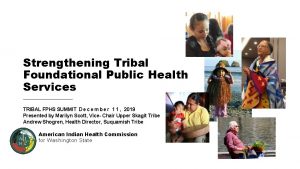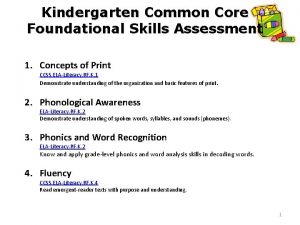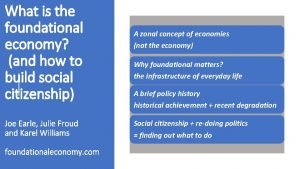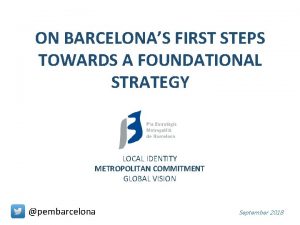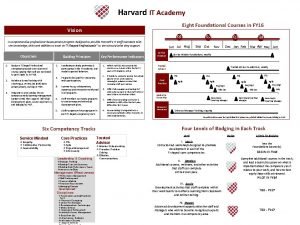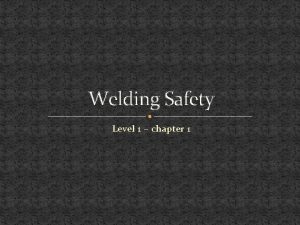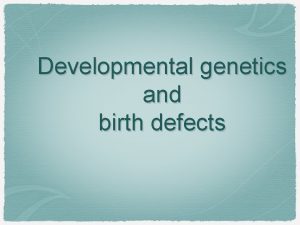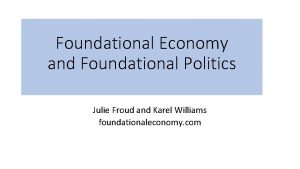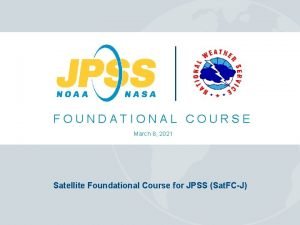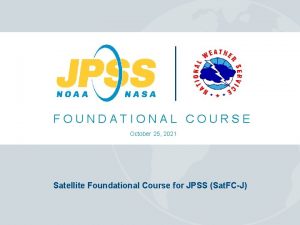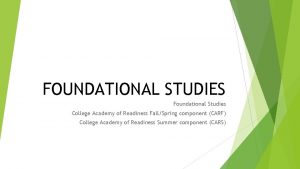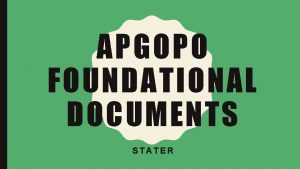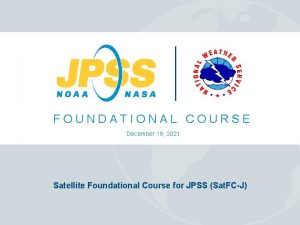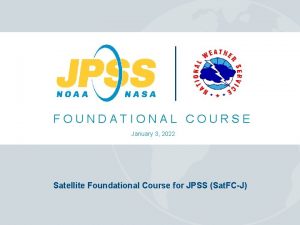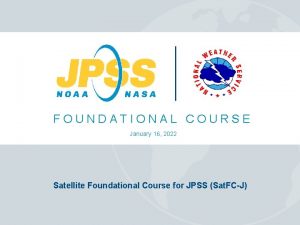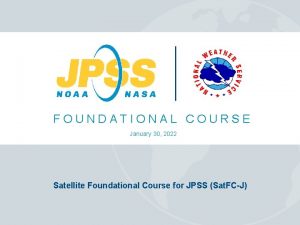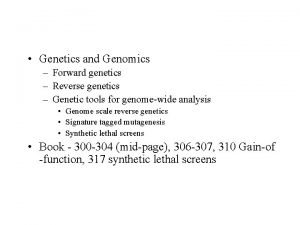Genetics and Environment Certainly the single most foundational























- Slides: 23

Genetics and Environment • Certainly the single most foundational idea in all of biology, and perhaps the greatest biological discovery… – All life is connected.

Evolution • Evolution – changes in the traits of a population over time • Explains how modern organisms have descended from ancient organisms, and continue to change even now

“Equation” Variation +Inheritance +Struggle for life Differential reproductive success +Time Change over time

Evolution by Natural Selection 1. Variation • Individuals vary from one another in billions of ways.

Evolution by Natural Selection 2. Inheritance • • Some variations have a genetic basis, and are passed from parent to offspring. Mutation adds new variations to a gene pool.

Natural Variation You and the person next to you share 99. 9% of your DNA… but there are still 3 MILLION base pairs different between you! What are some of the phenotypic differences that result? (Think both visible and unseen differences…)

Variation of Traits in a Population • Variations can be physical, behavioral, and biochemical traits (phenotype) because of differences in their genes (genotype). – Genetic variation is due to random DNA mutation, crossing over during meiosis, and sexual reproduction.

• Population - all the individuals of a species that live in the same area • Gene Pool – combined genetic information of all the members of a population • Allele Frequency – how common an allele is in the gene pool

• Organisms are not identical; they have varying behaviors and structures

• Some variability is inherited

Evolution by Natural Selection 3. Struggle for Life • There aren’t enough resources for every individual to live and breed forever. Everything must compete to survive and reproduce.

Reproduction Example • A pair of barn swallows arrived at my house in summer 1983. Barn swallows have an average of 10 chicks a year, and chicks return to their birthplace to start their own nests the next year. • How many barn swallows were at my house by 1990?

Year 1983 1984 1985 1986 1987 1988 1989 1990 # of Adult Swallows 2 12 72 432 2, 592 15, 552 93, 312 559, 872

Overreproduction • A single bacterium dividing every 20 minutes would have 40, 000, 000, 000 offspring by the end of one day. After two days, it would have enough offspring to cover the entire Earth in a 2 meter layer of bacteria. • In one year, a single pair of fruit flies would have so many offspring, their descents would weigh more than the planet. • The elephant is one of the slowest breeding species. But one pair of elephants would have 19 million descendents 750 years later. By contrast, there are only 700, 000 elephants alive in the whole world today.

Overreproduction • Why aren’t we buried in barn swallows, bacteria, fruit flies, elephants, and everything else? • Factors which limit equal survival and reproduction for all individuals include… Limited resources (examples: oxygen, nitrogen, water, food, space) Predation (being eaten, disease) Dangerous environments (climate, disasters)

• Organisms produce many offspring.

• Resources to support offspring are limited.

• There is competition for survival and reproduction.

4. Differential Reproductive Success • Some individuals have more offspring than others – Adaptation – an inherited characteristic that increases an organisms chance for survival and reproduction

Flowchart • On average, the organisms best suited for survival and reproduction leave the most offspring = natural selection

What determines success? Fitness - How well suited an individual is to survive & reproduce in its current environment (Does not have to mean “physically strong”) Ex: Sneaker crickets - Big healthy loud male gets eaten by bats, tiny skimpy hiding male gets to mate with the females. Skimpy male = higher fitness!

What determines success? – traits that help individuals survive • • survive predators survive disease compete for food compete for territory – traits that help individuals reproduce • attracting a mate • compete for nesting sites • successfully raise young

5. Change over time • After many generations of natural selection, changes in inherited characteristics occur within the whole population
 What is an adverb of possibility
What is an adverb of possibility Certainly factor
Certainly factor Certainly there be that delight in giddiness
Certainly there be that delight in giddiness Foundational skills definition
Foundational skills definition Foundational public health services
Foundational public health services Foundational marketing
Foundational marketing Kindergarten foundational skills assessment
Kindergarten foundational skills assessment Foundational marketing
Foundational marketing Fcs amerigroup
Fcs amerigroup Foundational framework meaning
Foundational framework meaning Foundational marketing
Foundational marketing Foundational economy
Foundational economy Foundational strategy
Foundational strategy Harvard it academy
Harvard it academy Environment of business finance
Environment of business finance Von neumann architecture is sisd
Von neumann architecture is sisd Single instruction single data
Single instruction single data Single channel single phase example
Single channel single phase example Most welding environment fires occur during
Most welding environment fires occur during Comparing business letters and memos worksheet answers
Comparing business letters and memos worksheet answers Hình ảnh bộ gõ cơ thể búng tay
Hình ảnh bộ gõ cơ thể búng tay Ng-html
Ng-html Bổ thể
Bổ thể Tỉ lệ cơ thể trẻ em
Tỉ lệ cơ thể trẻ em
